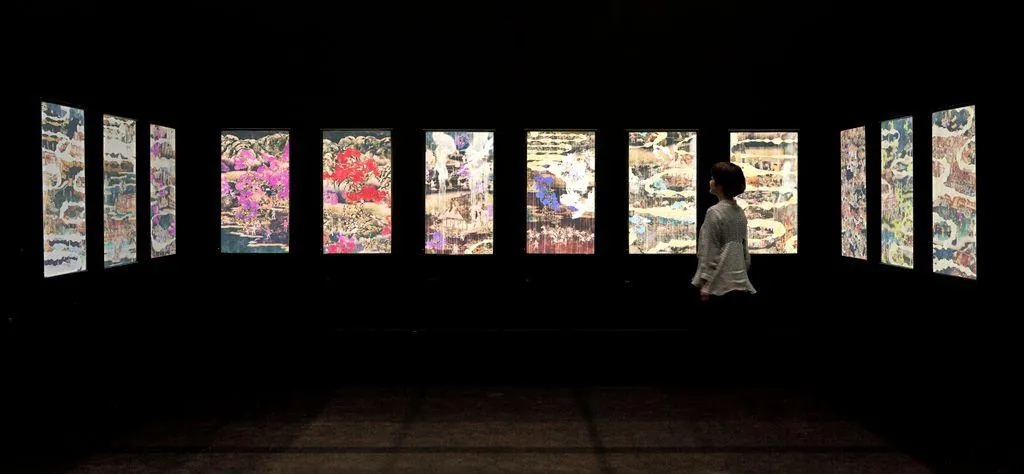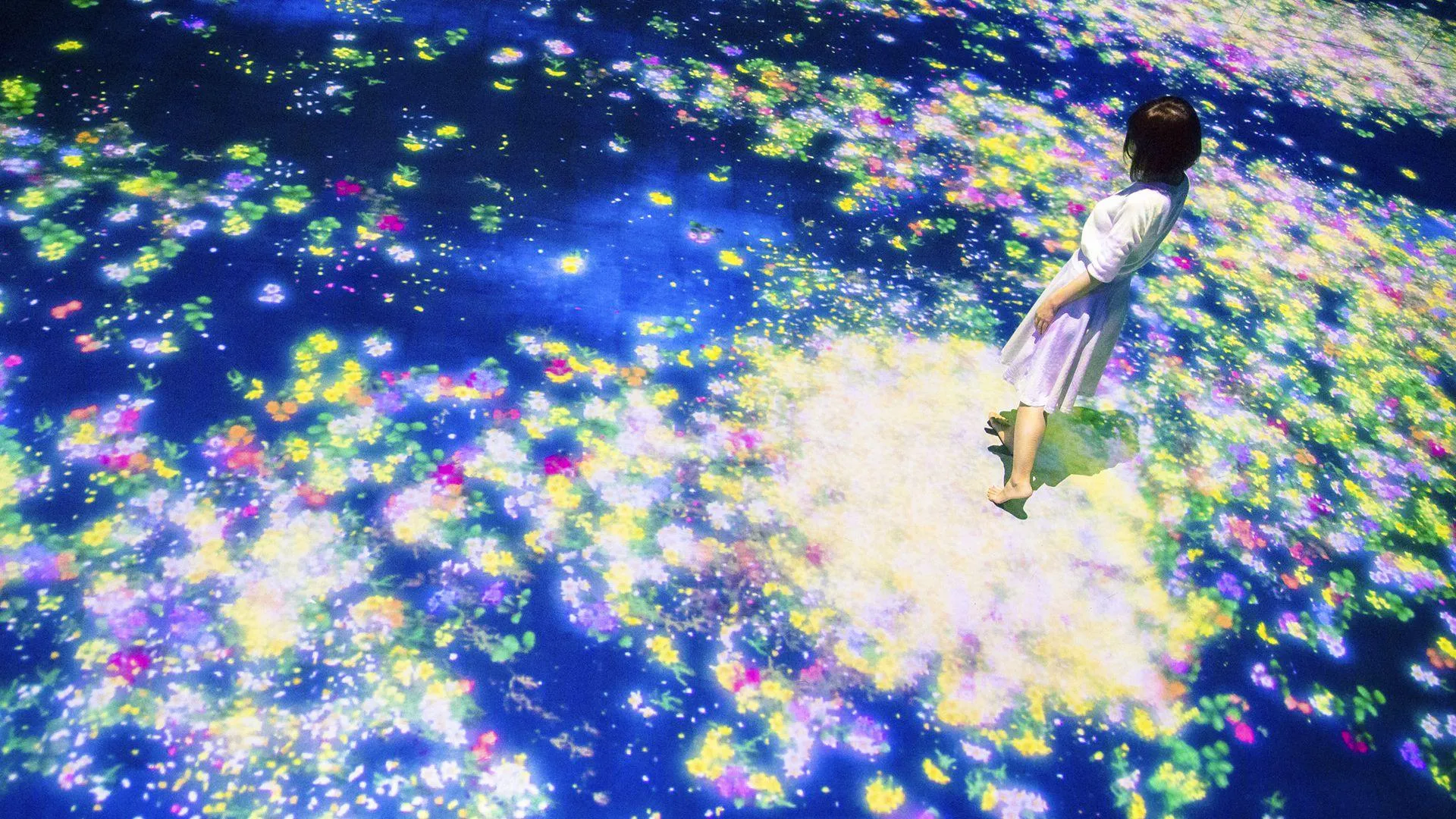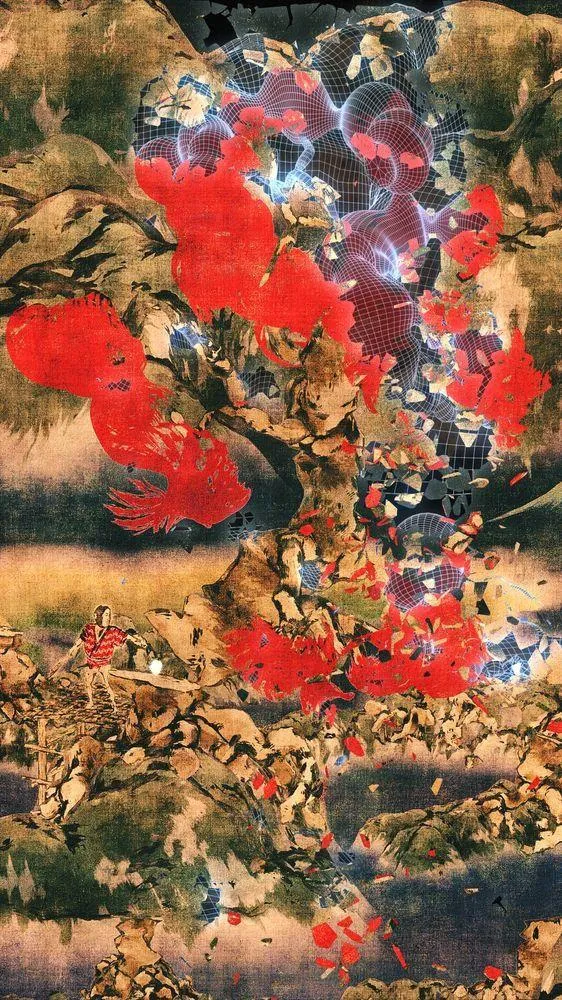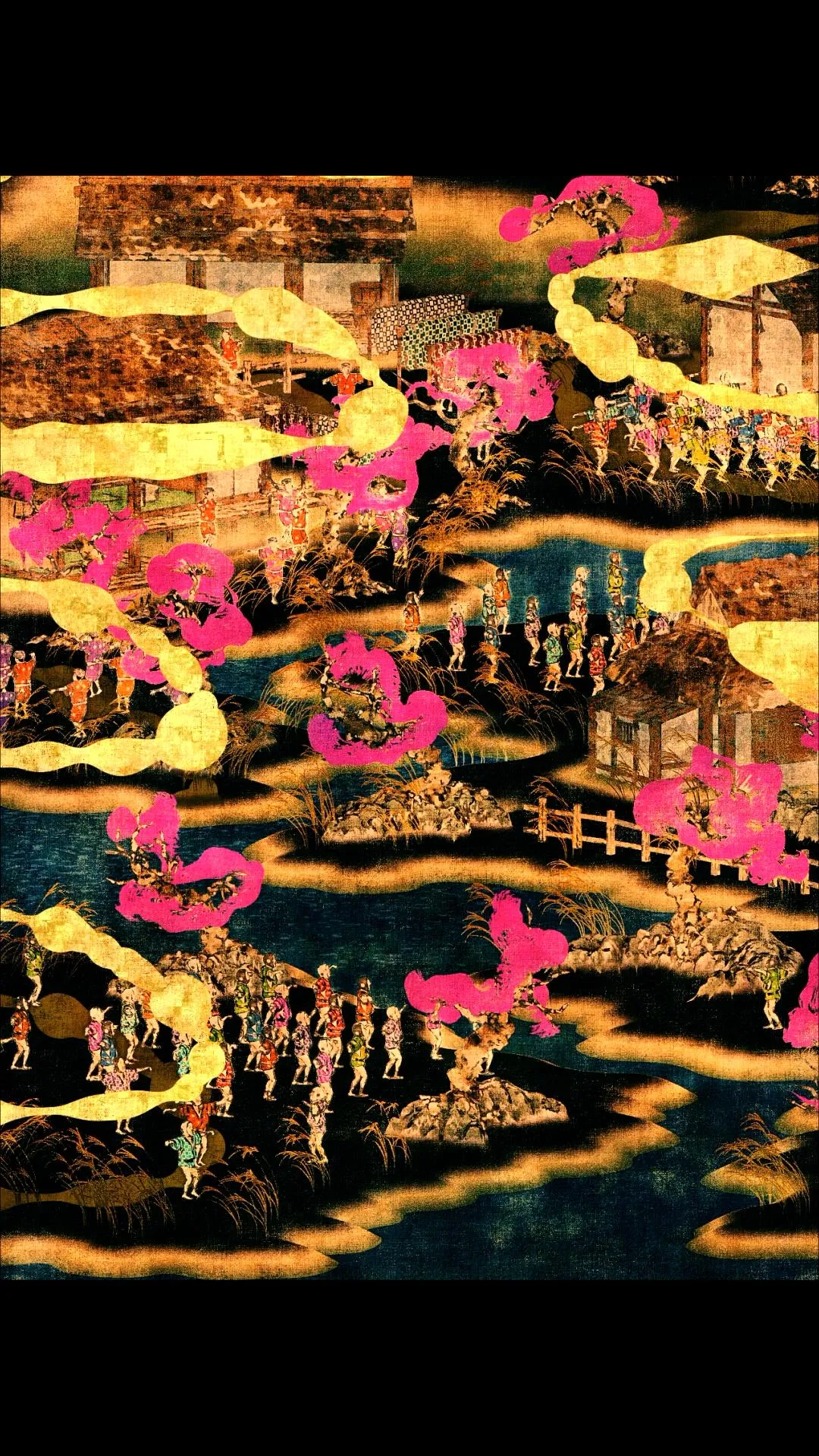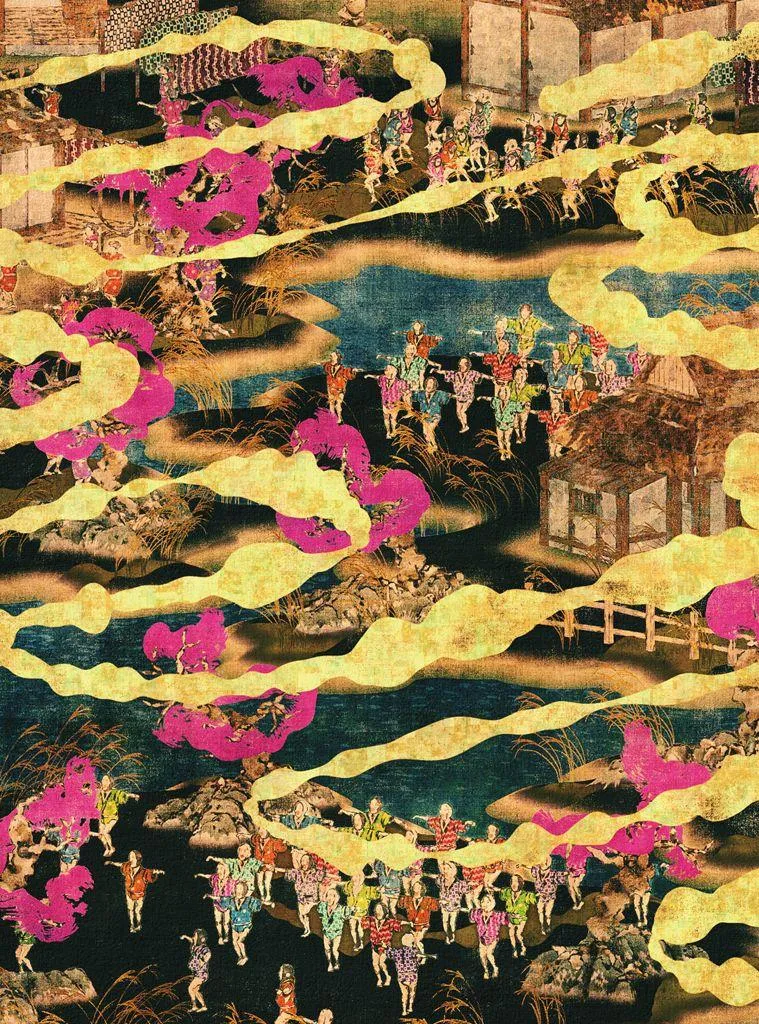Big In Japan: TeamLab's Digital Installation Takes Flight
Chelsea’s Pace Gallery, host to Tara Donovan: Untitled, will debut another large-scale installation this evening: Ultra Subjective Space. A direct import from Japan design group teamLab, five high-definition monitors flirt with one another to comprise a video loop titled—are you ready for it?—Crows are chased and the chasing crows are destined to be chased as well, Division in Perspective — Light in Dark, 2014. Phew. Dissimilar to its name, artgoers will actually remember the show. Press notes call the collective’s US debut “an all-encompassing experience of spatial perception,” which loosely translates to a futuristic ride at Tokyo Disneyland (but in this go-around, psychedelic brushstrokes meet Space Mountain).
Riffing off the whiz-bang choreography of the popular anime, “ITANO CIRCUS,” in teamLab’s take, missiles and lasers are eschewed for multiplying crows, the avian pest equivalent to American pigeons. We watch as the birds’ flight paths splice together to eventually crash and splatter into kiku (the chrysanthemum widely used at funerals in Japan). If it weren’t for the soaring music, this could be somber, but at the gallery preview last night, 37-year-old teamLab founder Toshiyki Inoki explained to Opening Ceremony that it’s not meant to be sad; the symbolism of fight-or-flight should stoke romance in a “what has been will be again” type way. Maybe we’re a bunch of anonymous birds; maybe we’re a bunch of flowers. Whatever we are, these staggered visuals come in the spirit of wabi-sabi, the Japanese philosophy of finding beauty in the imperfect—or even (gulp) the morbid.
Ultra Subjective Space runs through August 15
Pace Gallery New York
508 West 25th Street
New York, NY 10001
